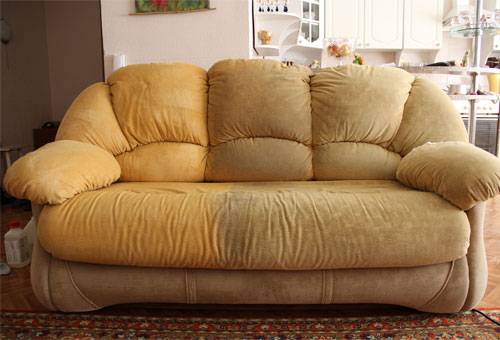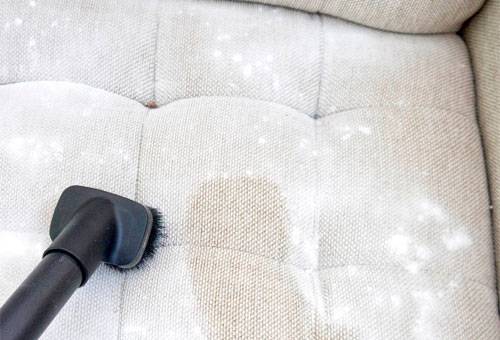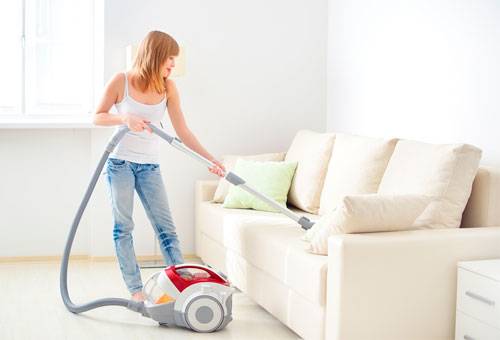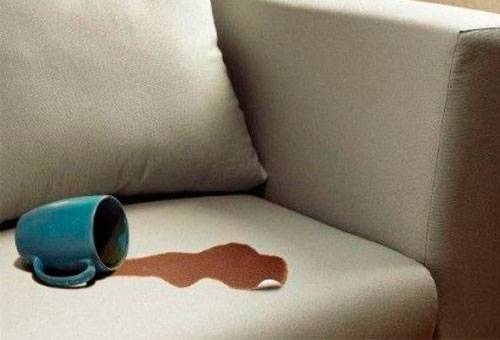Features of cleaning sofas and chairs with a fabric surface
Content:
Attractiveness, convenience and the ability to create an atmosphere of comfort - these are the main advantages of furniture with a fabric surface. Unfortunately, such products also have an obvious drawback - an increased degree of soiling, and it is not so simple to clean the upholstery from capricious and often fragile matter. We have to take into account the density of the tissue, the length of its pile, color stability, the response to the effects of chemical reagents. Cleaning large items of furniture from heavy contaminants at home is not the best solution to the problem, it is better to trust professionals. But this approach is convenient only in the case of working with removable covers. If it is not possible to use dry cleaning services, you can try to carry out the necessary manipulations yourself. Compliance with a number of rules will allow you to get the best result and prevent damage to matter.
General rules for the care of upholstered furniture
During the dry cleaning, many housewives like to clean upholstered furniture with a vacuum cleaner, believing that this is quite enough, especially with a regular approach. In fact, nothing collects dust and dirt, provoking the reproduction of microbes, like your favorite chair or a large family sofa. Ideally, these items should be cleaned every 3-4 months, and you will have to act not only superficially.
In order to qualitatively clean the selected product at home using improvised devices, you must perform the following steps:
- Vacuuming has not been canceled, just need to increase the effectiveness of the approach. We wrap the nozzle of the device with gauze soaked in salt solution (a tablespoon of salt is taken per liter of water) and we pass along all surfaces, not forgetting about the gap. This allows not only to clean the fabric, but also to refresh its color.
Tip: In the case of velor and velvet, it is better to refuse a flat nozzle of a vacuum cleaner, it will take a pile and spoil the appearance of the product. Thus, you can only process cracks and inaccessible places.
- The approach with a vacuum cleaner is better to replace with an older, but effective at home method. We take a sheet, moisten it in brine with vinegar (per liter of water, a tablespoon of table salt and a teaspoon of vinegar), squeeze it carefully. We cover the sofa or chair with a cloth and begin to gently knock out the surface, clapping it with your palms. If necessary, change the sheet and continue until the matter remains clean after exposure.
- If there are greasy marks on the fabric, prepare a mild soap solution. In it, we moisten the cotton cloth and begin to clean the problem area, performing movements in one direction.
- For those who do not want to take risks with folk remedies, there is a wide selection of specialized drugs, for example, in the form of foam. The product is applied to the entire sofa and wait until it is absorbed or dried. Then the area must be cleaned with a vacuum cleaner.
- Often, several drugs have to be used to eliminate persistent pollution. In this case, you must wait at least two hours between the steps, otherwise there is a risk of unexpected chemical reactions.
In the process of processing the fabric, it is necessary to ensure that moisture is not absorbed into the surface, this is fraught with stains. It is necessary to stock up on paper towels in advance in order to get wet the formed puddles.
The specifics of working with fabrics of different types
Before you start cleaning a soft sofa with a fabric surface at home, you need to understand the features of materials that most often act as upholstery:
- Leatherette. Such a surface can be cleaned without problems, only strong moistening of the fabric should not be allowed. Stubborn stains can be removed with egg white. It is simply whipped into a thick foam and applied to pollution. After a few minutes, wipe the surface, it should become cleaner and shine.
- Velours. It must be cleaned with a microfiber cloth soaked in vinegar (a teaspoon of vinegar per liter of water). In this case, you can not put pressure on the pile, all movements are performed only in its direction. It is almost impossible to remove difficult spots at home from velor; you will have to use dry cleaning services.
- Suede or nubuck. In this case, you need to stock up with a special brush with non-rigid bristles. Fatty formations are easily eliminated with an eraser or alcohol solution. A sofa or chair covered with suede is recommended to be regularly treated with dirt-repellent impregnations.
- Tapestry. A capricious and demanding surface that only accepts dry vacuuming well. The use of cleaning products leads to rapid wear of the coating and a change in its color. If the stains have to be cleaned in a wet manner, then only foam is applied to the dirt, with a minimum amount of moisture.
- Vinyl. Take three drops of any foaming detergent and dilute in a glass of water. The resulting solution process problem areas.
- Velvet and silk. Powder cleaning products have been developed for these fabrics.
Regardless of how the sofa was cleaned at home, you need to make sure that it is thoroughly dried. If the fabric absorbs moisture, and it remains inside the upholstery, soon mold will begin to bloom between the fibers. For drying, you can use a fan, hairdryer or plenty of fresh air.
The best options for dealing with spots of different origin
Components that leave unaesthetic marks on furniture upholstery react differently to chemical effects. Therefore, the solution to each problem must be approached individually:
- Juice. It is necessary to prepare a solution of ammonia and vinegar, preparations are taken in equal proportions. The resulting composition is applied strictly to the stain and wait until it dries (no need to warm). Then the treated area should be cleaned with a damp cloth.
- Coffee and tea. Conventional soap will relieve them. Rub a fresh stain with a piece of soap without adding water. Then we take a damp rag and wipe the area. We treat old pollution with soapy foam.
- Chewing gum. Before cleaning the problem area with chemicals, you need to take a piece of ice, wrap it in polyethylene and attach it to the product. When the composition freezes, we clean it with a plastic spatula. The remaining greasy trace is treated with alcohol.
- Blood. It is easily removed with water, you just need to make sure that all moisture used evaporates during the drying process.
- Fat. Baking soda will help to clean a greasy sofa. It needs to be poured on the problem place and wait until the grains absorb the fat layer. Then just remove the composition with a soft sponge.
All of these methods can get rid of unpleasant odors. If this did not happen and the smell remained, this indicates poor-quality manipulation. In this case, you should once again clean the problem area at home or entrust the process to professionals.



